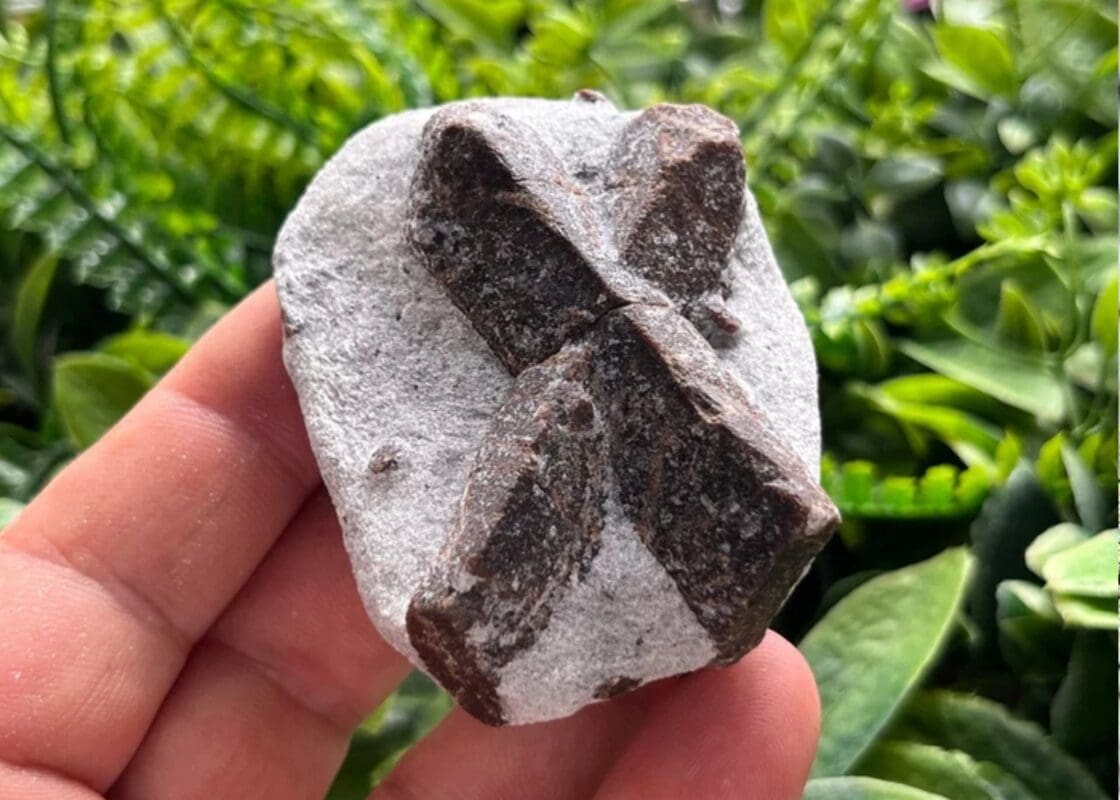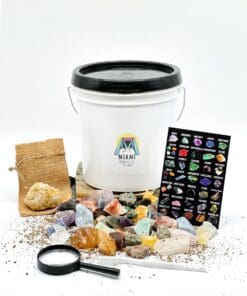Unearth Pennsylvania’s Treasures: Your Ultimate Gem Mining Guide
Pennsylvania, with its vast and diverse geology, beckons hobbyists, families, and seasoned gem hunters alike to unearth its hidden treasures. From sparkling quartz to shimmering serpentine, the Keystone State has it all. In this guide, we’ll explore the best places to mine, the gems you might discover, and the rich history of gem mining in Pennsylvania.
The Most Popular Gemstones in Pennsylvania
Pennsylvania’s diverse geological makeup allows it to house both common and rare gemstones. While the common ones are found in multiple locations and in abundant quantities, the rare gems are a true treat for dedicated gem hunters. Let’s delve deeper into these two categories.
Rare Gemstones in Pennsylvania:
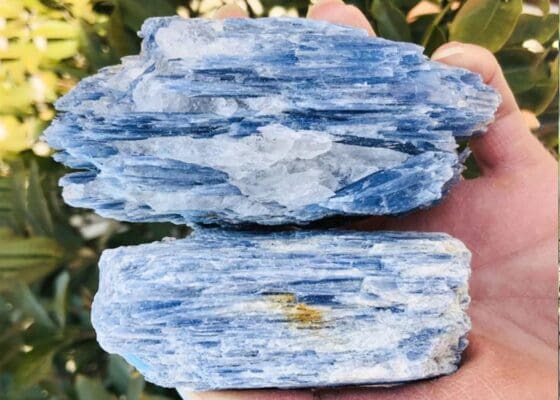
| Gemstone | Description |
|---|---|
| Beryl | A mineral ranging from green (emerald) to blue (aquamarine). Found in pegmatites. |
| Pyrite | Often called “fool’s gold” because of its metallic luster. Notable for its shiny, gold-like appearance. |
| Kyanite | This blue-aluminosilicate mineral is used as an index mineral to estimate temperature, depth, and pressure during metamorphism. |
| Olivine | A greenish crystal commonly found in mafic igneous rocks. |
| Staurolite | Often referred to as “fairy crosses” due to its cross-like crystal twinning. Found in metamorphic rocks. |
Common Gemstones in Pennsylvania:
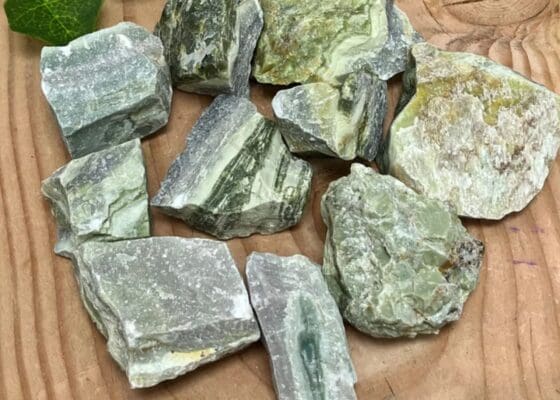
| Gemstone | Description |
|---|---|
| Quartz | One of the most abundant minerals, ranging from transparent to smoky. |
| Garnet | These deep-red gemstones are commonly found in Pennsylvania’s metamorphic rocks. |
| Serpentine | A group of minerals that yield greenish stones, predominantly found in southern parts of the state. |
| Tourmaline | A colorful mineral that can be found in a spectrum of colors, most commonly in the eastern region. |
| Calcite | This crystal is often found in Pennsylvania’s limestone regions and can fluoresce under UV light. |
| Feldspar | Constitutes a significant part of Pennsylvania’s igneous and metamorphic rocks. |
| Muscovite | A type of mica that is light-colored and flaky, found in many of the state’s rock formations. |
| Hematite | An iron-rich mineral that is metallic gray or reddish-brown. It’s the main ore of iron. |
| Magnetite | Another iron ore, this one is magnetic and often found alongside hematite. |
| Dolomite | A carbonate rock closely related to limestone but differs due to its magnesium content. |
Pennsylvania’s vast landscape and rich geological history ensure that these gemstones, both rare and common, can be found in various parts of the state. They capture the essence of the region’s mineralogical wealth and draw gem enthusiasts year after year.
Top Gem Mining Locations in Pennsylvania

- Quartz Hill Mine, Lebanon: Renowned for its vast quartz deposits, the Quartz Hill Mine is a haven for enthusiasts of this crystal. Located near Lebanon, its operating hours are from 8 am to 6 pm. While fees vary depending on the mining activity, guided tours are also available for those interested in the mine’s history.
- Serpentine Barrens, Southern Pennsylvania: A unique ecosystem, the Serpentine Barrens are ideal for serpentine enthusiasts. The site has no fixed operating hours and entry is free, but visitors are reminded to be respectful of the fragile environment.
- Bake Oven Knob, Eastern Pennsylvania: A popular site for tourmaline, Bake Oven Knob is a picturesque location frequented by gem collectors. Open from sunrise to sunset, entry is free, but it’s advised to visit during weekdays to avoid crowds.
- Meadow Run, Fayette County: Known for its garnet-rich rocks, Meadow Run is a stream where panning is especially fruitful. Open year-round, the site has no fees but it’s recommended to visit during dry months for the best experience.
- Grace Mine, Berks County: Previously an iron mine, Grace Mine now offers hematite and magnetite finds. Though it’s privately owned, there are occasional open days for public gem hunting. Fees and operating hours are subject to change.
- Jonestown Agate Bed, Lebanon County: As the name suggests, agates are the primary draw here. Open from 8 am to 5 pm, there’s a small fee for a day’s mining, which includes rental equipment.
- Bald Eagle State Forest, Centre County: A hotspot for beryl and aquamarine, this forest offers beautiful landscapes alongside gem hunting opportunities. Open year-round, it’s free to enter, but collecting rules apply.
- French Creek Mine, Chester County: Famed for its pyrite and magnetite, French Creek Mine is an excellent spot for beginners. Open from 9 am to 6 pm, there’s a nominal fee, which covers basic mining tools.
- Durham Mine, Bucks County: Historically significant for its iron, Durham Mine now attracts those looking for calcite and dolomite. Open occasionally for public mining, dates and fees are best checked in advance.
- Mcadoo, Schuylkill County: Rich in anthracite and quartz, Mcadoo is perfect for those looking to delve deeper into Pennsylvania’s mining heritage. Operating hours vary, and there’s a small fee for guided tours which provide an in-depth understanding of the site’s history and geology.
These top ten sites offer a diverse gem mining experience in Pennsylvania, providing a mix of history, geology, and, of course, the thrill of the hunt. Always ensure to check with individual sites before planning a visit, as operating hours and fees might be subject to change.
History of Gem Mining in Pennsylvania

The legacy of gem mining in Pennsylvania is both rich and storied, painting a vibrant tapestry of the state’s natural resources and the pioneering spirit of its inhabitants. To truly appreciate the value and significance of the Keystone State’s gemstone treasures, it is essential to delve into the annals of its mining history.
Pennsylvania’s relationship with gemstones and minerals began long before European settlers set foot on its soil. Native American tribes, particularly the Lenape and Susquehannock, revered the land’s bounty and utilized local minerals for creating tools, jewelry, and ceremonial objects. They already recognized the inherent value of gems like quartz, used not only for its beauty but also for its function in crafting tools.
With the arrival of European settlers in the 17th century, the narrative shifted from subsistence to commerce. Recognizing Pennsylvania’s untapped mineral wealth, these settlers embarked on more organized mining endeavors. By the 18th century, Pennsylvania had garnered a reputation as a hub for gem enthusiasts and miners alike. As mining techniques evolved, more diverse gemstones were unearthed, drawing attention from all over the country.
In the 19th century, the industrial revolution’s momentum brought about a surge in the mining industry. Mines like the Quartz Hill Mine in Lebanon and the Serpentine Barrens in southern Pennsylvania became household names among gem collectors and traders. This era not only marked the extraction of gems for their aesthetic value but also the recognition of Pennsylvania’s mineralogical significance in industry and science.
While the 20th century saw a decline in large-scale mining operations due to environmental concerns and shifting economic paradigms, the allure of gem hunting remained. Hobbyists, families, and amateur geologists started turning to Pennsylvania’s mines, not for commercial gain, but to connect with nature, history, and the thrill of discovery.
Today, as we reflect on Pennsylvania’s gem mining heritage, it’s evident that it’s not just about the gems themselves but also the stories they tell – tales of ancient civilizations, pioneering settlers, industrial feats, and individuals united by their passion for the earth’s treasures.
Gem Mining Regulations in Pennsylvania

Pennsylvania’s bountiful geological riches have, over the years, attracted scores of gem enthusiasts, miners, and commercial entities. The allure of discovering a sparkling gem or a valuable mineral embedded within the state’s landscape is undeniably thrilling. However, it’s imperative to understand that Pennsylvania, like other states, has regulations in place to protect its natural resources, ensure the safety of its residents, and maintain ecological balance.
First and foremost, a distinction is drawn between hobbyist collecting and commercial mining. Hobbyists or amateur gem hunters are typically allowed to collect specimens for personal use without much hassle. This is especially true on public lands where recreational gem hunting is permitted. However, the volume of gemstones one can collect is often limited to ensure sustainability. Also, the use of extensive machinery or explosives by hobbyists is strictly prohibited.
On the other hand, commercial mining – operations intending to sell or profit from mineral extraction – requires a range of permits. These licenses often involve environmental impact assessments to ensure that mining doesn’t adversely affect local ecosystems or water sources. Additionally, after the conclusion of mining activities, companies are usually mandated to carry out land reclamation efforts to restore the area to its original state or make it suitable for beneficial use.
There are also restrictions regarding where one can mine. Private lands, for instance, require explicit permission from the landowner. Trespassing on private mines or claims without authorization is illegal and can carry hefty penalties. In the case of state parks or protected areas, mining, even for recreational purposes, is often prohibited to protect natural habitats and cultural resources.
Safety regulations are also a paramount concern. Mines, especially old or abandoned ones, can be hazardous. Underground shafts, unstable rocks, or even toxic chemicals from past mining efforts pose significant risks. As such, certain areas may be off-limits to the public, or you might be required to wear safety equipment.
Lastly, it’s worth noting that the regulations are not just restrictive but protective. They ensure that the rich geological heritage of Pennsylvania is preserved for future generations. These rules also uphold the rights of landowners, protect native habitats, and aim to prevent ecological degradation.
For anyone keen on embarking on a gem mining adventure in Pennsylvania, it’s always recommended to do thorough research, respect the rules, and understand that these regulations exist for the greater good of the state’s environment and its people.
Necessary Tools and Equipment for Gem Mining in Pennsylvania
When setting out on a gem mining adventure in Pennsylvania, being adequately prepared can greatly enhance your experience and increase your chances of uncovering hidden treasures. The nature of the mining, whether it’s in an open pit, along a riverbank, or in a cave, requires specific tools tailored to the environment. Here’s a comprehensive guide to essential equipment for your gem hunting journey in Pennsylvania:
1. Screening and Classifying Tools: Reveal those hidden treasures!
Description: When mining in riverbeds or areas with loose sediment, a set of sifting screens helps separate larger rocks and debris from potential gemstones. These are especially handy for uncovering smaller or more delicate gems.

🛒 Explore Top Screening Sets on Amazon
2. Shovels and Trowels: Digging deep or just scratching the surface?
Description: Essential for digging, these tools come in handy when working in softer earth or silt near riverbeds. They’re perfect for moving earth and uncovering potential gem deposits.

🛒 Find Quality Shovels and Trowels on Amazon
3. Picks and Hammers: The backbone of any gem hunting endeavor.
Description: This versatile tool is perfect for breaking apart rocks and revealing potential gems within. With a flat end and a pointed end, it’s designed for both precision and force.

🛒 Check Out Best Picks and Hammers on Amazon
4. Buckets: Your trusted companion for carrying treasures.
Description: A sturdy bucket can be handy for carrying larger finds and seperating different types of stones.

🛒 Shop for Reliable Buckets on Amazon
5. Magnifying Glass: Every detail counts!
Description: Some gems or mineral samples are tiny or require close examination. A magnifying glass allows for detailed inspection and can help differentiate genuine gems from look-alikes.

🛒 Grab Your Magnifying Glass on Amazon
6. Guidebooks and Field Guides: Knowledge at your fingertips.
Description: A gemstone field guide specific to Pennsylvania is invaluable. It aids in identifying and verifying your finds, offering insights into gemstone formation, appearance, and locality.

🛒 Discover the Best Field Guides on Amazon
7. Containers and Bags: Organize, store, and flaunt your finds.
Description: Once you’ve made a discovery, having durable bags or containers ensures safe storage. Small plastic containers or padded pouches are excellent for delicate or valuable finds.

🛒 Shop for Storage Solutions on Amazon
8. First Aid Kit: Better safe than sorry!
Description: Accidents, however minor, can happen. A basic first aid kit equipped with band-aids, antiseptics, and other essentials should always be on hand.

🛒 Secure Your First Aid Kit on Amazon
In conclusion, the right tools can make a significant difference in your gem mining endeavors. Not only do they improve efficiency and the probability of discovery, but they also ensure safety and comfort during the process. Before embarking on your journey, check the specific requirements of your chosen mining location and adapt your toolkit accordingly.
Tips and Tricks for Successful Gem Mining in Pennsylvania

Delving into the world of gem mining is as much about strategy and knowledge as it is about luck and persistence. Whether you’re an eager novice or a seasoned prospector, Pennsylvania’s diverse geological terrain offers opportunities for everyone. To maximize your gem mining experience in the Keystone State, consider these insider tips and tricks:
1. Research Ahead of Time: Before heading out, research the specific gems native to the area you intend to visit. Familiarizing yourself with their characteristics will help you recognize potential finds more easily.
2. Visit After Rain: Rain can wash away topsoil, revealing previously hidden gemstones on the surface. Especially if you’re panning in rivers, a recent rainfall can bring new treasures downstream.
3. Start Early: Not only does this beat the afternoon sun, but many popular locations can get crowded as the day progresses. An early start ensures a prime spot and fewer disturbances.
4. Be Patient: Gem mining is a game of patience. Don’t be disheartened if you don’t find something immediately. Often, the most rewarding discoveries come after hours of searching.
5. Connect with Locals: Local enthusiasts or miners often possess invaluable knowledge about hidden spots, recent discoveries, and the general gem distribution in the area.
6. Respect the Environment: Always remember to fill in any holes you dig and avoid disturbing local flora and fauna. Maintaining the integrity of the environment ensures that these areas remain accessible and fruitful for future prospectors.
7. Layer Your Clothing: The weather can be unpredictable, and terrains vary. Dressing in layers allows you to adjust to changing conditions, ensuring you remain comfortable throughout the day.
8. Join a Club or Group: Pennsylvania boasts several mineralogical and gem hunting clubs. Joining such a group can provide access to private digs, expert guidance, and a community of like-minded enthusiasts.
9. Invest in a Good Field Guide: As you grow in your gem hunting journey, having a comprehensive guide will aid in identification and offer insights into gem formation, rarity, and value.
10. Stay Safe: Always let someone know where you’re going and when you expect to return. If possible, mine with a buddy, especially in unfamiliar or secluded areas.
To sum it up, successful gem hunting in Pennsylvania requires a mix of preparation, persistence, and respect for the environment. While finding a precious gemstone or a unique mineral specimen is undoubtedly thrilling, the journey itself – immersed in nature, exploring the land, and connecting with Pennsylvania’s rich geological history – is equally rewarding.
Handling Your Gemstone Finds
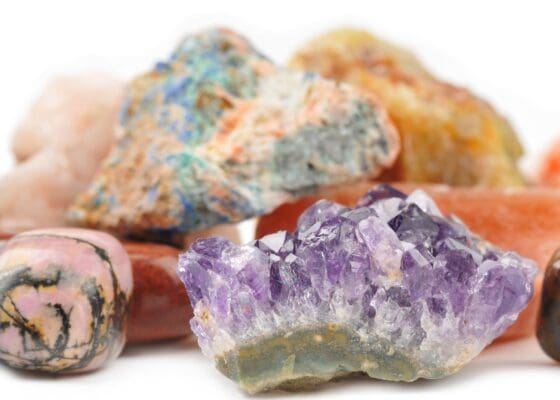
Discovering a gemstone, whether it’s your first or your fiftieth, is always a thrilling experience. However, after the excitement of the find, it’s essential to know how to care for, clean, and possibly showcase your treasures. Proper handling can make all the difference in preserving the beauty and value of your gemstones. Here’s a comprehensive guide to managing your Pennsylvania gem finds:
1. Gentle Cleaning: Begin by rinsing your gemstones under lukewarm water to remove any loose dirt or debris. For more stubborn dirt, use a soft brush, like a toothbrush, to gently scrub the surface.
2. Know Your Gem: Some gemstones can be sensitive to sunlight, heat, or certain chemicals. Researching the specific properties of your find will ensure you don’t accidentally damage it during cleaning or storage.
3. Avoid Harsh Chemicals: While household cleaners might seem tempting, they can harm many gemstones. Instead, opt for mild soapy water if a deeper cleaning is necessary.
4. Proper Storage: Store your gemstones individually to prevent them from scratching each other. Soft pouches or padded gem boxes are ideal for this purpose.
5. Labeling: Especially if you’re a frequent hunter, labeling your finds with the date, location, and type of gem can help keep your collection organized.
6. Consider Display Options: From shadow boxes to display cases, there are numerous ways to showcase your gemstones. Think about the aesthetic you want and how often you might want to handle or show off your gems.
7. Get a Professional Opinion: If you believe you’ve found something of significant value or rarity, consider taking it to a gemologist or appraiser. They can offer insights into your gem’s quality, origin, and potential value.
8. Learn Basic Gemology: Investing in a basic gemology course or workshop can provide invaluable knowledge, helping you better identify, grade, and care for your finds.
9. Think About Setting: Particularly beautiful or sentimental stones might be ideal candidates for jewelry settings. Local jewelers can craft custom pieces, turning your discoveries into wearable art.
10. Documentation: For rarer or more valuable finds, keeping documentation (like appraisals or identification papers) is crucial for both insurance and resale purposes.
In conclusion, the journey of gem hunting doesn’t end with the discovery. Proper care and appreciation of your finds will ensure they remain as captivating as the day you unearthed them, serving as lasting reminders of your adventures in Pennsylvania’s rich terrains.
Famous Gemstone Finds in Pennsylvania
Pennsylvania, with its rich geologic history, has been the site of numerous remarkable gemstone discoveries. These finds, some dating back centuries, have shaped the state’s mineralogical legacy and piqued the interest of gem enthusiasts worldwide. Here’s a look at some of the most noteworthy gemstone finds in Pennsylvania:
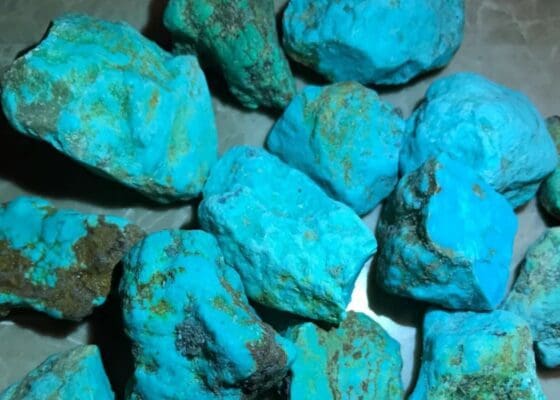
1. The Star of Pennsylvania: Found in the early 1900s, this impressive sapphire boasted a unique star pattern when viewed under direct light. Weighing over 50 carats, it became an iconic representation of Pennsylvania’s gemstone wealth.
2. Garnet Groves: In the 1800s, large deposits of garnet were discovered in several parts of Pennsylvania. One specific find yielded a massive garnet crystal cluster, weighing in at over 10 pounds, making headlines in gemological circles.
3. The Blue Beauty Turquoise: Turquoise is a rarity in Pennsylvania, but in the late 20th century, a stunning blue specimen was unearthed. Named the ‘Blue Beauty’ for its rich hue, this find remains one of the state’s most exceptional turquoise examples.
4. Quartz Mountain: A site near Lancaster produced a significant number of high-quality quartz crystals in the 1950s. One particular find was a perfectly formed, transparent quartz crystal weighing over 3 pounds.
5. Amethyst Arena: Amethysts are relatively common, but in the 1970s, a vein in Pennsylvania yielded exceptionally deep purple crystals, some as long as 8 inches. These finds are now part of various museum collections.
6. The Pennsylvania Peridot: In 1985, a miner chanced upon a vibrant green peridot specimen. This stone, notable for its size and clarity, drew attention from jewelers and collectors across the nation.
7. Celestial Celestite: Pennsylvania is not typically known for celestite, but a discovery in the early 2000s changed that. A clear, sky-blue celestite cluster, resembling a piece of the night sky, made it a favorite among local collectors.
8. Calcite Caverns: Over the years, several caverns have yielded magnificent calcite formations. One noteworthy discovery in the late 1990s was a luminescent orange calcite formation, which looked almost otherworldly under UV light.
9. Pyrite’s Golden Days: The “fool’s gold” of Pennsylvania, pyrite, has had many notable finds. In the 20th century, a near-perfect cubic pyrite specimen was found, dazzling with its sharp edges and metallic luster.
10. The Topaz Touch: A lesser-known gem site in Pennsylvania once yielded a topaz of impeccable clarity and a rare golden hue, instantly marking it as one of the state’s most significant discoveries.
Each of these discoveries has added to Pennsylvania’s mineralogical lore, showcasing the diverse and impressive geologic treasures waiting beneath its surface. These tales inspire both amateur and seasoned gem hunters to dream of making the next significant find.
Additional Gem Mining Opportunities
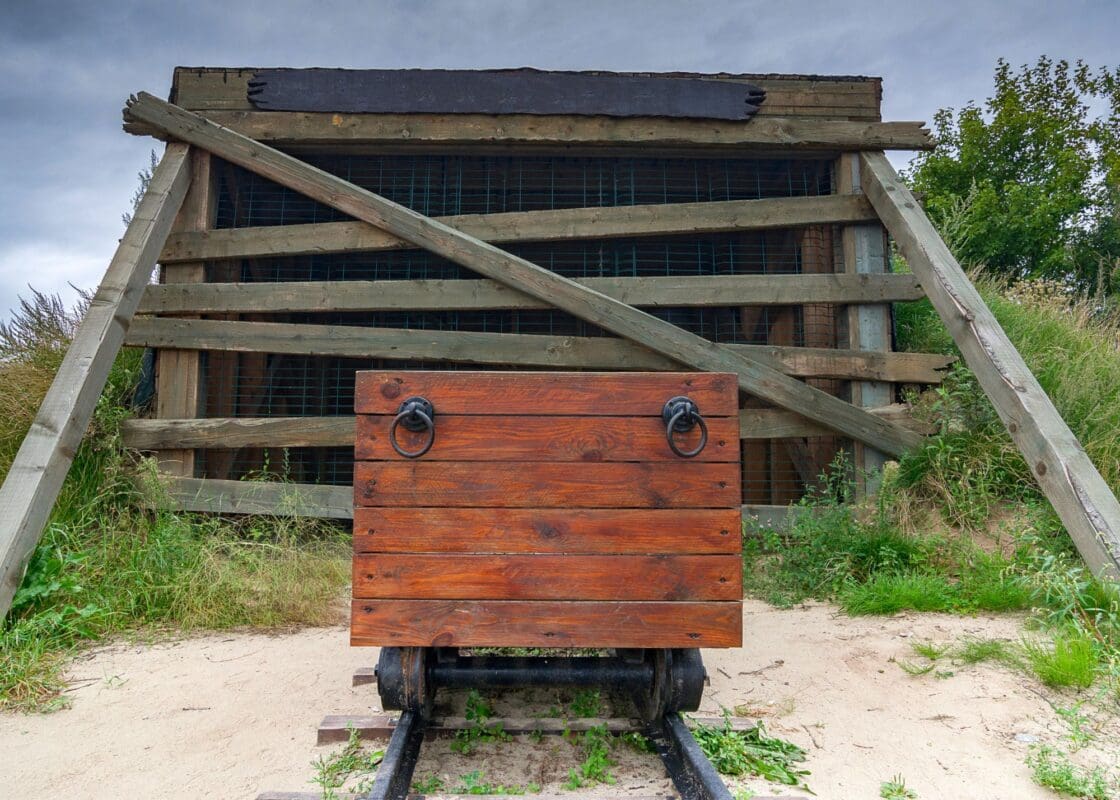
The thrill of gem hunting isn’t confined to Pennsylvania’s borders. In fact, several neighboring states offer unique and exciting gem mining experiences, each with its own geological wonders and tales of incredible discoveries. If you’re looking to expand your gem hunting horizons, consider these neighboring states:
1. New York Gem Mining: Known for its famous Herkimer diamonds, New York offers gem enthusiasts the chance to unearth these beautiful double-terminated quartz crystals. The state is also home to garnets and moonstones in certain regions.
2. Ohio Gem Mining: Ohio beckons with its rich deposits of flint, especially the highly prized Ohio Flint. Additionally, the state has pockets where trilobite fossils, a treat for fossil collectors, are abundant.
3. West Virginia Gem Mining: Famous for its beautiful blue corundum, also known as sapphires, West Virginia promises fruitful hunting for gem enthusiasts. Additionally, the state is known for garnets and quartz.
4. Maryland Gem Mining: With its diverse geology, Maryland offers opportunities to find agates, jaspers, and even gold in some regions.
5. Delaware Gem Mining: Although a smaller state, Delaware has been known to produce garnets, especially in the areas surrounding the Brandywine Creek.
6. New Jersey Gem Mining: Famous for its prehistoric mineral deposits, New Jersey is a hotspot for zeolites. Additionally, the state has produced beautiful specimens of green garnet.
The East Coast, with its ancient geological formations and rich mining history, provides a vast playground for gem enthusiasts. Each state offers its own unique treasures and tales, making every mining adventure a new and exciting journey.
Our Gem Mining Near Me guide is packed with invaluable insights for aspiring gem miners.
The Endless Allure of Gem Hunting & Home Mining Kits
The lure of gem hunting in Pennsylvania is much more than the simple act of unearthing precious stones. It’s an intimate dance with history, an exploration of geological wonders, and an embodiment of the timeless human desire to discover and treasure the hidden beauties of our planet. Pennsylvania’s varied landscapes offer both the casual explorer and the dedicated gemologist a rich tapestry of experiences, each mining adventure unique, promising both challenge and reward.
However, for those who might be constrained by time, resources, or other factors, the thrill of gem discovery is not out of reach. Enter the gem mining kit — a curated experience that brings the wonder of mining to the comfort of your home. These kits offer a variety of gemstones mimicking real-life mining. enthusiasts can chip away, wash, and reveal treasures, feeling that same exhilaration of discovery. It’s a perfect way to introduce children to geology, or simply relive the thrill of gem hunting anytime you wish.

